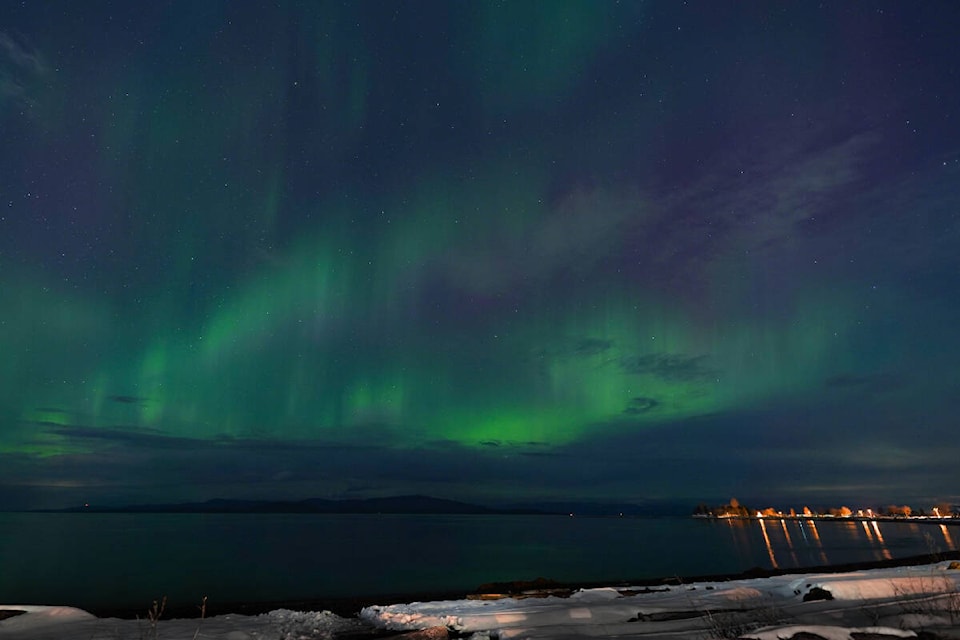A Parksville photographer captured a rare display in the area’s skies recently.
Wendy Kotorynski knew there was potential for a strong geomagnetic storm the night of Feb. 26 to Feb. 27, and that as long as the clouds stayed out of the way, there would be a great showing of the Aurora Borealis (also known as the Northern Lights).
“I don’t think any night photographers or astro photographers realized how great it turned out to be all around the world,” said Kotorynski, an avid follower of space weather. “You never know. Sometimes they fizzle out, sometimes they pass us by or they even change direction and don’t come, so you really don’t know until about 45 minutes before.”
Kotorynski took some striking photos of the lights, along with a time lapse video.She was at Parksville’s waterfront from 10 p.m. to 3 a.m. and said the lights were steady for much of the time, which is unusual.
“It just kept going,” she said. “There’s little lulls that would happen, but then it would pick up again and movement, dancing as we call it, will start.”
Kotorynski said she sees four to six decent showings of the Aurora Borealis a year, “but this one was spectacular — one of the best we’ve ever had.”
The combination of strong emissions from the sun, along with the solar wind speeds, plus the clear skies, made for a remarkable display, she added.
READ MORE: Nature Trust of B.C. raising funds to protect land in Little Qualicum River
Kotorynski, who has done night photography for approximately 10 years, said the most important tip for capturing the Northern Lights is patience. It takes 20 minutes for your eyes to fully adjust to the dark, she said, and each time you glance at your cell phone or a vehicle’s headlights, the clock resets.
“If you just get out of your car for 30 seconds, they might say, ‘well there’s nothing here’ and they go home. I see that all the time.”
It’s best to bundle up in warm clothes and watch the skies for a while, or you could miss a storm picking up.
Kotorynski also recommended a camera capable of taking long exposures, with a tripod for stability. Some new cell phone cameras have a setting for long exposure, as long as the phone is propped up on something to keep it still, she added.
It’s hard to predict the storms, but the chances will be higher for the next two years or so, Kotorynski said.
“We’re also in what they call a solar maximum right now,” she said. “So every 11 years, we enter into time where there’s more aurora than usual.”
Kotorynski said the solar maximum will peak in 2025 and has already noticed the frequency in solar storms has increased over the past few months.
